
At the George W. Bush Presidential Center’s Freedom Matters exhibition, the smallest pieces of paper represent the biggest advances in the pursuit of liberty.
The exhibition, on view in Dallas through December 31, uses rare documents from the Harlan Crow Library and David Rubenstein to explore the personal understanding of freedom and government. Upon entering the exhibition, visitors hear the voices of people like Condoleezza Rice explaining what freedom means to them.
“What Freedom Matters does is we’ve taken historical documents and then the voices of individuals throughout history and combines them to discuss the concept of freedom,” said Hannah Abney, the Bush Center’s Chief Communications Counselor and creator of this exhibition.
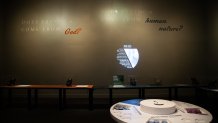
Get DFW local news, weather forecasts and entertainment stories to your inbox. Sign up for NBC DFW newsletters.
Interactives based on a high-school-level curriculum engage visitors. One table asks visitors to determine if a concept like voting without fear or intimidation is a political, economic or personal freedom. If the visitor answers correctly, a green checkmark lights up.
“I have a 12-, 10- and 7-year-old child and they have come into the exhibit as we’ve been building it and I can’t get them away from this table. It’s very fulfilling,” Abney said.
Visitors can explore different forms of government and the history and origins of democracy. A gallery explains how Greek democracy worked, describing who was allowed to vote and how they cast their ballots. Athenians used broken pieces of pottery instead of more expensive paper to vote out and ostracize people who had become too powerful and too unpopular.
The Scene
Freedom Matters features documents that influenced the development of American democracy, including a 14th-century copy of the Magna Carta so small that a magnifying glass may be required to read it.
“It’s tiny,” Abney said. “This is a working document. Those people who worked within the law or needed to know the English statutes including the Magna Carta, this is something they would have carried with them or had in their office, similar to how people carry around the U.S. Constitution in their pocket.”
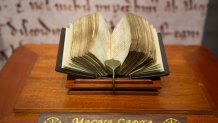
These pocket-sized documents were how people learned about democracy before mass media.
“This is the way people interacted with their government. These are the documents they were using,” Abney said.
The version of the United States Constitution on display is another example of the personal use of these monumental documents.
“This is a magazine, essentially,” Abney said. “This is how most people interacted with the Constitution of their new government for the very first time. This is how they read it. That’s thrilling.”
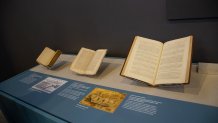
Living up to the ideals articulated in the Declaration of Independence, also on view, is an ongoing project.
“The path to freedom is not linear and it requires people to stand up for themselves and the rights of others,” Abney said.
A gallery is devoted to showing how individuals have advocated for freedom throughout history. A small card is a rare representation of the Emancipation Proclamation.
“It was printed by the Union government and soldiers took it down to the South and handed it out primarily to enslaved people so that they knew the Emancipation Proclamation had occurred and what it said,” Abney said.
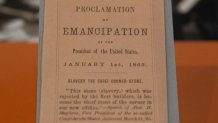
A first edition of Uncle Tom’s Cabin is displayed alongside the editions of Scene in the Life of Harriet Tubman, The Narrative of the Life of Frederick Douglass, and Narrative of Sojourner Truth, demonstrating the power of the abolitionist story.
“It’s also indicative of documents that would have influenced people’s perspectives on really important issues,” Abney said.
Susan B. Anthony’s short-lived newspaper, The Revolution, represents the ideals and struggle of the suffrage movement.
“She talked about suffrage, but she also talked about issues that were really important to women that were incredibly controversial like divorce or women’s health rights. This was something that was really attractive to working class women,” Abney said.
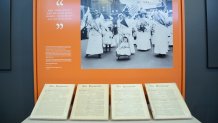
Documents, primary sources and personal narratives illuminate case studies demonstrating how the never-ending pursuit of freedom resulted in national soul-searching and legislation, including the Indian Citizenship Act, Japanese American incarceration during World War II, the Civil and Voting Rights Acts, the Americans with Disabilities Act, and marriage equality.
Freedom Matters concludes with a video featuring those voices that greeted visitors upon entering the exhibition, urging every individual to continue to pursue the liberty so beautifully enunciated in the exhibition’s treasured documents.
Learn more: The George W. Bush Presidential Center



